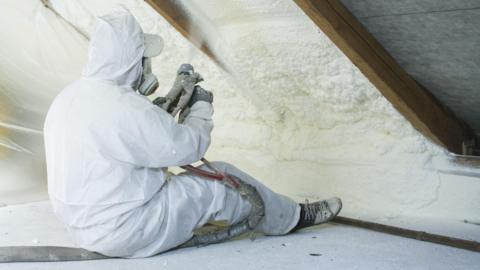Spray foam insulation has been used to stop heat escaping from roofs, lofts and attics for decades and comes in two forms.
Closed cell spray foam is rigid once set. It is a better thermal insulator and was previously sold to stabilise failing roofs. But if it has been used inappropriately or installed poorly, it might put stress on timbers, restrict air circulation and put them at risk of decaying.
Open cell spray foam remains soft once set and is only used for insulation. It is more breathable but is often installed where a highly-resistant underlay like bitumen felt is already present, stopping vapour from escaping.
Geoff Hunt, an independent chartered building surveyor, said open cell spray foam had gained popularity in recent years, bolstered by government initiatives.
But he said mortgage lenders struggle to assess spray foam, leading to "caution and refusals on higher-risk applications", for example, where it has been applied directly onto roof tiles.
Properly-installed open cell foam on a sound roof has not been conclusively linked to roof decay, he added, emphasising that it is important for homeowners with this type of insulation not to panic.

